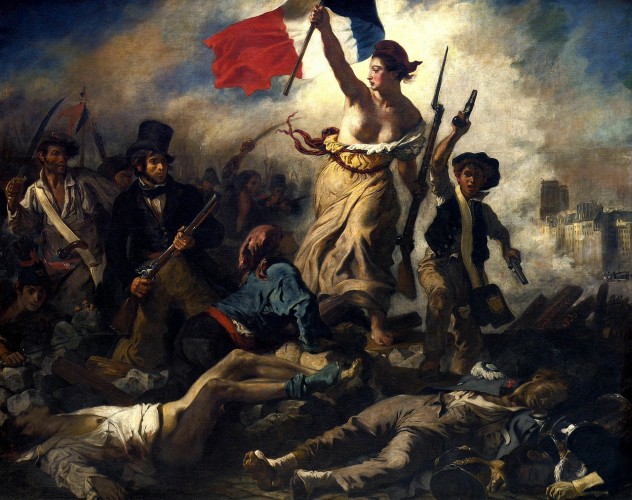Story-Telling For Philosophic Thinkers
If you’ve been following the TOOLS OF IMAGINATION SERIES you’ll know that there are many different tools we can employ with curricula to engage students. While these tools differ one from the other, a common thread connects them all. Every “cognitive tool” described—whether one that comes with the body, oral language, written language or, indeed, now, through the realization of a world of theory—helps us to learn because it engages emotion.
When we engage human emotion we enable meaning-making, support memory, and deepen understanding.
The very first cognitive tool described in the Tools of Imagination Series was on story or the story-form.
Story is the mega-tool of imagination.
Stories help us to organize information (facts, events, experiences) into patterns that evoke our emotions (that’s what makes a story a story—we feel something about the content). Story-shaping is, indeed, the way human beings make meaning and it’s one of the most effective ways to make the knowledge content of the curriculum memorable to students. (You might be interested in reading: How To Make All Learning Meaningful & Memorable: Teaching As Storytelling).

The “meta-narrative” cognitive tool is the “story-shaping” cognitive tool for philosophic thinkers; it allows for emotional engagement with a big idea or concept. So, meta-narratives are also “stories” but rather than organizing individual events or facts, meta-narratives help us to organize our theories, ideologies, generalizations or other abstract ideas into meaningful patterns. Meta-narratives “bind theories together” (IERG website).
Dr. Kieran Egan describes the metanarrative as
a very general, and very powerful, tool which prominently uses our emotions to create coherent responses to varied phenomena. Meta-narratives are clearly tied to complex higher psychological processes and their purpose is to create for us emotional satisfaction with regard to the complex inhabitants of our abstract realm. Like all of our tools, we may misuse it or not develop it very adequately. But its proper use allows us great facility in bringing together in emotional harmony an array of abstractions. (IERG Website)
Examples Of Meta-Narratives At Work
Topic: Revolutions (Subject Area: History/Social Studies)
To engage students’ philosophic imagination–their interest in the world of abstract ideas–we will want to step back from specific historical details about particular Revolutions and, instead, focus on the larger processes and theories that explain those specific historical (or current) events. We might explore how Revolutions work—what narratives, first, do we find in them, and then how we can generalize towards a meta-narrative (connecting separate theories/narratives tied to specific events into a whole).
Take, for example, the French Revolution, a topic which many senior students will have studied as part of their History curriculum. With an interest in philosophic engagement, we will want to direct students to overarching questions that evoke general ideas and understanding. These kinds of questions may include: What is a revolution? What general idea explains the sudden changes in French society? What was the main dynamic of the revolution? Why did it happen when it did, and, in following its progress, what events were crucial in making it “revolutionary”? What are the theories explaining these events in France?
In investigating these questions, you can begin to shape a theory of the revolution. Stimulate the process further by asking students to compare the French Revolution with other revolutions such as the Russian (“October”) Revolution, American Revolution, or Chinese Revolution(s). Different abstract ideas will begin to emerge as students identify different dynamics at work. The students can be asked to try to decide what is the essence of a revolution—what elements must be necessary for some change to be considered revolutionary?
We can at this point revisit the discussions about the nature of revolution. As their conception of revolution becomes more refined, and perhaps as disagreements become clearer, we can turn to a scientific revolution, such as that resulting from Einstein’s theories of relativity. Why did they appear so revolutionary? What was the state of science before Einstein’s work, and what was it about his theories that changed many physicists’ views of the world and how they could study it?
We can look in detail at the changes that occurred, and at the broad range of new ways of conceiving the subatomic and cosmic views of matter that resulted. We can consider how far the theories’ association with such technological products as the atomic bomb led to Einstein’s becoming an iconic figure of “the scientist,” and how far that is responsible for his work being considered revolutionary. We can then revisit our discussions about the nature of revolution with this further example, and we can bring our new ideas to bear on it, elaborating students’ developing meta-narrative understanding about the course of revolutions. (Source: IERG Website)
Another example of meta-narrative: In the post entitled “Was Literacy Just A Phase?“ Dr. Tim Waddington connects various theories about and perspectives on our media/social media-crazed world into an emotionally powerful abstract “whole”.
Final Comments
When you engage the story-form philosophically through “meta-narrative shaping”, you add a whole new layer of meaning to students’ understanding. Most importantly, shaping your topic in a way that brings out its emotional force increases its meaning for your students. So tap into their interest in abstract ideas. TIP: Sometimes looking to history can help: What historical questions or conflicts can be introduced to give a historical perspective on the topic? What cross-curricular connections unit the ideas surrounding the topic?
Please leave a comment. Share an example. Send money*.
(*Stay tuned for later posts on irony and the imagination!)



